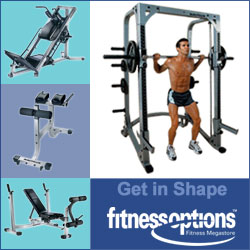
Article at a Glance:
To boost your success, it’s important to set clear fitness goals. Setting SMART fitness goals increases your success rate by up to 42% compared to vague intentions like “get in shape”.
- Breaking your ultimate fitness vision into mini goals creates sustainable momentum and prevents the common cycle of motivation followed by burnout, which is crucial when you set clear fitness goals.
- Tracking progress using metrics beyond the scale, like strength gains or recovery time, provides more meaningful feedback for long term success. This is essential when you set clear fitness goals.
- Creating accountability systems through workout buddies or fitness apps can double your adherence rate when motivation naturally fluctuates.
- Fitness results happen on a personal timeline understanding your unique starting point is essential for setting realistic expectations and when you set clear fitness goals.
Ever noticed how the same fitness goals keep reappearing on your New Year’s resolution list? You’re not alone. The truth is, setting fitness goals isn’t the challenge it’s formulating them in a way that actually works with your life and psychology. FitnessGoals.com has developed a science backed approach to goal setting that transforms vague intentions into actionable plans you’ll actually follow.
Why Most Fitness Goals Fail (And How You’ll Succeed)
The statistics are sobering, approximately 80% of fitness resolutions collapse by February. But this isn’t about willpower it’s about strategy. Most fitness goals fail because they’re either too vague (“get healthier”), unrealistically ambitious (“workout two hours daily”), or disconnected from what truly motivates you.
The difference between those who achieve their fitness aspirations and those who don’t often comes down to one thing, proper goal formulation. When you set clear fitness goals, you define your goals with clarity and build systems that support them, you’re no longer fighting against your psychology you’re working with it.
Think of fitness goals like GPS coordinates. Without precise destinations, you’ll wander aimlessly, getting frustrated along the way. With clear coordinates and a mapped route, each step has purpose even when the terrain gets challenging.
The Perfect Fitness Goal Formula: SMART Goal Setting
The framework that transforms wishful thinking into achievable results is the SMART method Specific, Measurable, Achievable, Relevant, and Time bound goals. This isn’t just corporate jargon, it’s a practical approach backed by decades of behavioural psychology research. When applied to fitness, it becomes your blueprint for success.
Specific: Ditch “Get in Shape” for Measurable Targets
Vague goals produce vague results. Instead of “get stronger,” try “increase my squat weight by 20 pounds” or “be able to do 10 full push ups.” Specificity creates clarity, and clarity drives action. Your brain responds to concrete targets with greater focus and resource allocation.
When you specify exactly what you want to achieve, you activate the part of your brain responsible for planning and execution. This mental clarity translates directly into more effective workouts because you know precisely what you’re working toward each time you enter the gym.
Measurable: Creating Tracking Systems That Work
What gets measured gets improved. Effective fitness goals include clear metrics that allow you to track progress objectively. Whether it’s tracking weights lifted, minutes run, or measurements taken, measurable goals provide feedback that fuels motivation.
The key is choosing metrics that actually matter for your specific goal. If strength is your priority, track your progressive overload in key exercises. If endurance matters most, monitor your heart rate recovery time or distance covered. The right metrics serve as breadcrumbs on your fitness journey, confirming you’re moving in the right direction.
“The difference between a dream and a goal is a deadline and a measuring stick.” This philosophy transformed my approach to fitness, turning vague aspirations into concrete achievements tracked in my training journal.
Achievable: Setting Challenges, Not Impossibilities
The sweet spot for motivation isn’t setting easy goals it’s setting challenging but attainable ones. Research shows that goals with about a 70% likelihood of success provide optimal motivation. Too easy, and you won’t feel accomplished, too difficult, and you’ll get discouraged.
This doesn’t mean limiting your ambitions. Instead, it means creating a progressive pathway toward your ultimate vision. Each achieved goal becomes a foundation for the next, creating sustainable momentum rather than early burnout. To avoid the latter, it’s imperative to set clear fitness goals.
Relevant: Aligning Goals with Your True Motivations
The most powerful fitness goals connect directly to what genuinely matters to you. External motivations like impressing others rarely sustain long term effort. Internal motivations like having energy to play with your kids or improving your mental health create lasting commitment.
Time Bound: Deadlines That Drive Action
Open ended goals create open ended timelines which typically means no timeline at all. Setting a deadline creates healthy pressure that mobilizes action. Your fitness goals should include both short term deadlines (weekly targets) and longer term milestones (3-month achievements).
The most effective deadlines balance ambition with realism. Six weeks might be enough to increase your running distance by a mile, but inadequate for adding 50 pounds to your bench press. Understanding typical progression rates for different fitness attributes helps set deadlines that push you without setting you up for failure.






